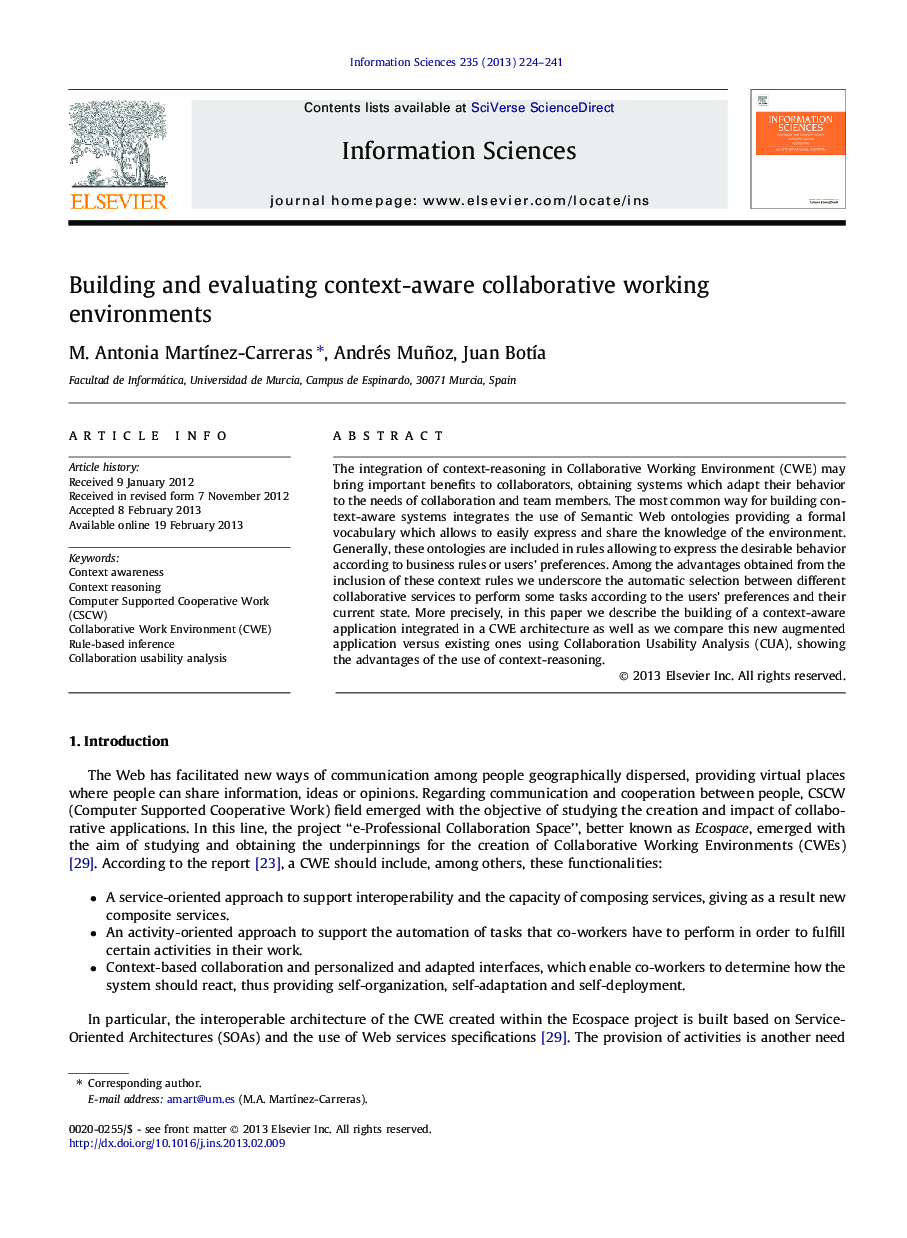| Article ID | Journal | Published Year | Pages | File Type |
|---|---|---|---|---|
| 393442 | Information Sciences | 2013 | 18 Pages |
The integration of context-reasoning in Collaborative Working Environment (CWE) may bring important benefits to collaborators, obtaining systems which adapt their behavior to the needs of collaboration and team members. The most common way for building context-aware systems integrates the use of Semantic Web ontologies providing a formal vocabulary which allows to easily express and share the knowledge of the environment. Generally, these ontologies are included in rules allowing to express the desirable behavior according to business rules or users’ preferences. Among the advantages obtained from the inclusion of these context rules we underscore the automatic selection between different collaborative services to perform some tasks according to the users’ preferences and their current state. More precisely, in this paper we describe the building of a context-aware application integrated in a CWE architecture as well as we compare this new augmented application versus existing ones using Collaboration Usability Analysis (CUA), showing the advantages of the use of context-reasoning.
